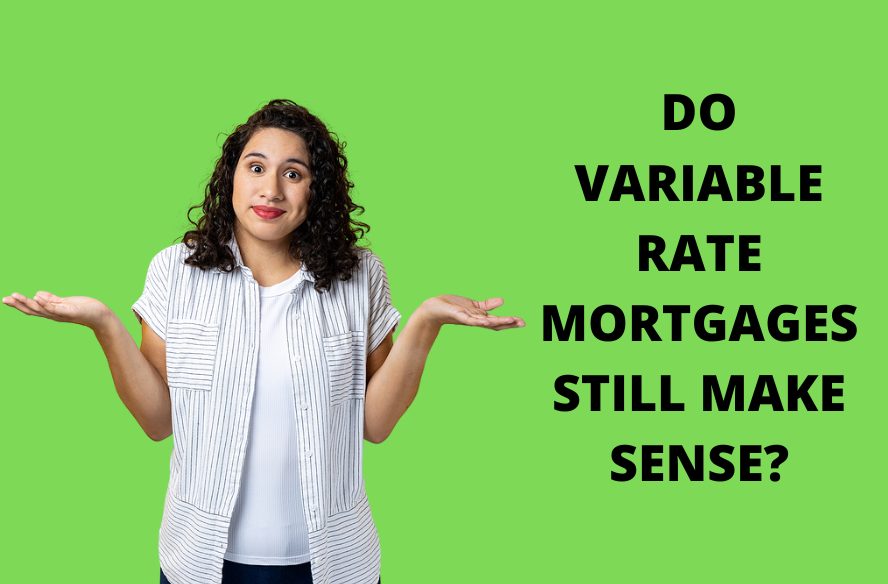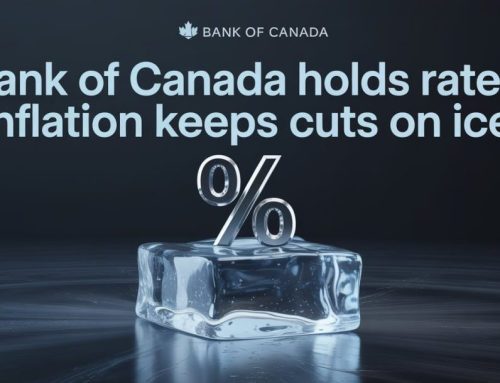Back in early 2022, there were forecasts indicating that the Bank of Canada would increase their rate by as much as five times before the end of the year. All at the standard 0.25% per increase, which would have put the prime rate at 3.45% to 3.70%.
They couldn’t have been more wrong.
We’re at six increases to date, all oversized except for the first of the cycle back on March 2nd. The prime rate currently sits at 5.95%, a whopping 2.25% higher than the original forecasts.
And the Bank of Canada is not finished.
Their next scheduled rate announcement is on December 7th where they are expected to hike by another 0.25% to 0.50%.
There are some economists speculating that we could see the rate rise even further in early 2023.
To put yet another strike against variable rates mortgages, they are almost even with their fixed rate alternatives. Assuming rates increase again on December 7th as expected, variable rate mortgages will be higher than fixed rates.
Once you take all that in, you would think that choosing a variable rate mortgage would be a bad move.
Or would it?
Short Term Variable Rate Losses
Choosing a variable rate mortgage today will be almost guaranteed to put you behind the eight ball in the early stages of the loan. But choosing to go with a fixed rate based on this alone is short term thinking. We also need to look at the economic outlook, and what is expected from mortgage rates moving forward.
While there is some speculation that rates could increase further in early 2023, it’s still widely expected that December 7th will be the end of this rate hiking madness.
The Bank of Canada will eventually come through with rate cuts. It’s just a matter of when they start, and how deeply they cut. The common belief is some time in 2024, with a few of the major banks forecasting cuts toward the end of 2023.
If the Bank of Canada achieves their goal of bringing inflation down to 3% by the end of 2023 and 2% by the end of 2024, then chances of an earlier rate cut are increased.
What If The Variable Rate Is Higher Than The Fixed?
Even if your variable rate were to start out higher than the fixed mortgage rate alternatives, multiple rate cuts in 2024 would make coming out on top with the variable not just possible, but probable. That is, providing that rates remain low for the remainder of the term.
The Short Term Fixed Alternative
Another option would be to consider a shorter term fixed rate, which are now more popular than ever due to the anticipation of falling rates within the next few years. Shorter term fixed rates are currently priced higher than the five year options, but the same logic applies as with the higher variable rate explained above. Just as you can come out ahead starting with a higher variable rate mortgage, you can come out ahead in the long run by choosing a higher rate short term fixed rate mortgage. You’ll be behind at first, but if things progress as expected, then the long-term savings should more than make up for any short-term loss.
And it’s saving the most money over time that is most important.
Which Chance Do You Take?
Regardless of which strategy you choose, you’re taking a chance. Just as economists were flat out wrong at the start of 2022, there is nothing to say they won’t be equally as wrong this time around. But being wrong is not always a bad thing, as there are occasions where it could work out in our favour.
Maybe rates will start to fall even sooner and more deeply than originally expected?
But then again, there is nothing to say that rates won’t continue to increase further and remain elevated for even longer.
Time will tell.
Conclusion
2022 has probably been the toughest year to be in the rate forecasting game. No one has a crystal ball, and all anyone can do is speculate based on the information available today.
Anything can happen.
The right choice comes down to what makes you feel most comfortable. If you’re the type that becomes fraught with anxiety worrying about the possibility of rates moving higher, then perhaps a fixed rate might be the better choice.
But if you’re financially sound and comfortable with the possibility of additional rate hikes, then it might be worthwhile to roll the dice and go with the variable rate option.
If still unsure, then a shorter-term fixed rate might be a happy medium. You get the benefit of a locked in rate, but with a shorter time commitment.
In the end, it all comes down to what you feel comfortable with. As I say in my book, the best choice isn’t always the one that saves you the most money. It’s the one that allows you to sleep soundly at night.








Leave A Comment